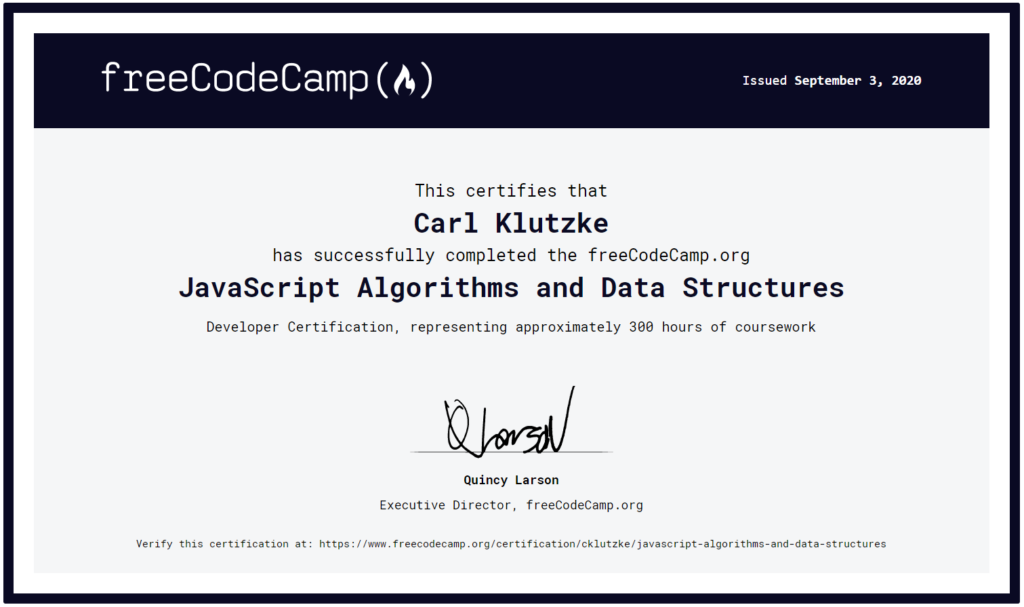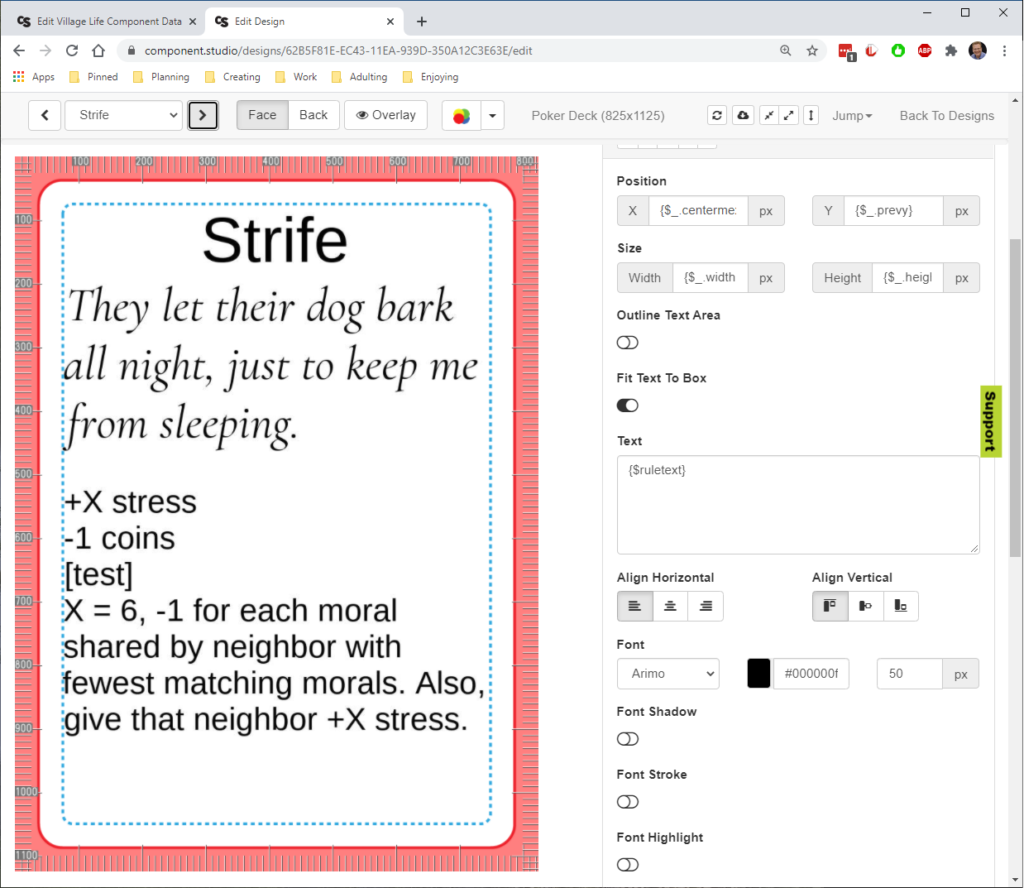Lots of socializing yesterday. IWUD planning meeting. Talking with the IUXPA president before and after the meeting. Talking to one of the other board members about job opportunities that he’d been approached with. Talking with a game designer who wanted to drop off a copy of his published game in thanks for the Protospiel connections I’d helped him make. Talking with another game designer about a 3D-printed component that he wants to use in a game… somehow. Talking with an ex-colleague to comfort her on the loss of her cat and how we should go hiking together. Talking with my sister and mom, just because you should talk to your parents at least once a week for as long as you’re alive. Playing games with my own kids and nephew.
But I finished the second FreeCodeCamp certification that I know I want before applying to front-end development jobs, and I stared on the third. And I found the second coding exercise that I flubbed in a senior software development engineer position interview, because I want to solve that problem and apply there again. And UX Designer positions are starting to come to me instead of me seeking them out, at the same time that I’m starting to realize I’m not sure I want a job that doesn’t let me code.
Progress. Slowly. Things Take Time.

